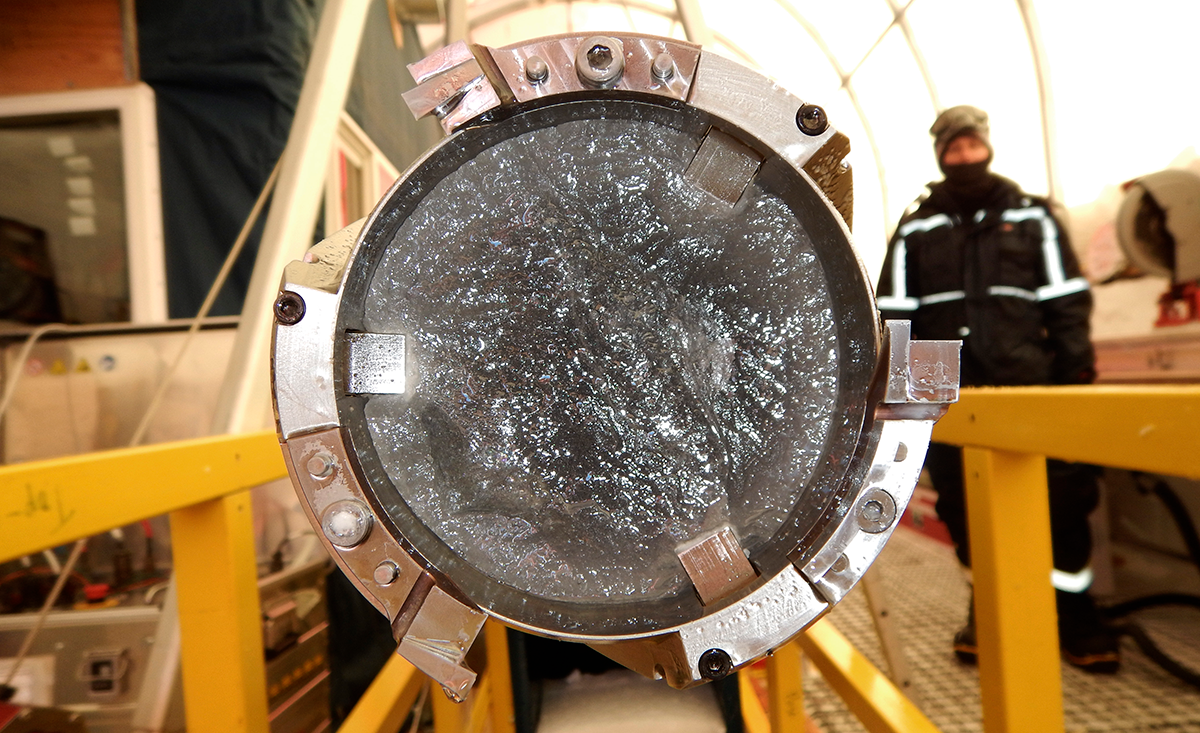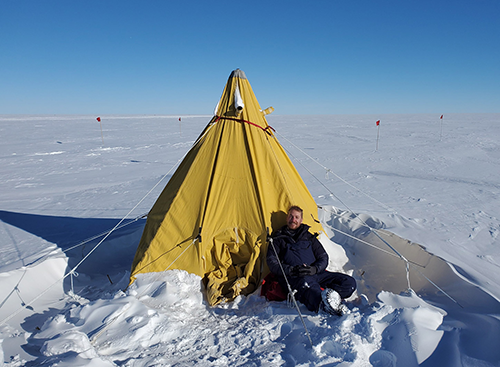
A section of an ice core. These cylinders reveal our past and may predict our future.
Nick Holschuh’s research is on ice right now. On the Antarctic ice sheet, to be exact.
The assistant professor of geology is part of a major effort by scientists around the country to find, extract and study some of the oldest ice in the world. The collaboration—which this fall won $25 million in National Science Foundation funding—is led by Oregon State University and known as COLDEX.
Holschuh is a geophysicist, and this is his second year at Amherst. He was previously a postdoc at the University of Washington, where he used radar data to study the Antarctic ice sheet.
The ice sheet contains a treasure trove of microscopic matter trapped during various warming and cooling cycles in the Earth’s recent past. Scientists drill long cylinders, known as ice cores, from below the subsurface to study and date. These consist of layers of ice that can be tied to particular years and eras. Because new layers are always forming, Antarctica contains a continuous record of Earth’s climate history.
“Isotopes in ice cores are one of our best proxies for past temperature,” Holschuh says, “and gases trapped in bubbles in ice cores are as good as if we sent a time machine back a million years and directly sampled the atmosphere.”

Holschuh with his tent in Antarctica. “We are taking the first steps in a decade-long scientific mission,” he says. Photo courtesy Nick Holschuh.
In other words: To understand climate change, our best records of two major components of it—temperature and carbon dioxide—can be found in Antarctic ice cores.
But the oldest continuous record that scientists have extracted thus far comes from an ice core that dates back only 800,000 years. COLDEX hopes to drill miles down to extract a core at least twice that age.
That’s where Holschuh comes in. His job is threefold: to determine the history of ice flow that led to the modern Antarctic ice sheet; to predict which drill sites are likely to hold ice cores at least 1.5 million years old; and to evaluate whether the climate record of those ice cores will be complete and interpretable. He and his team will use plane-mounted radar to image the subsurface of the ice, and will analyze those images. From there, he’ll point his COLDEX colleagues to the most promising locations for drilling.
“For the past 1.2 million years, Earth has been swinging from warm to cold, slowly re-entering an ice age every 100,000 years,” he says. “Humans, however, are breaking the cycle through our burning of fossil fuels, putting us on a trajectory that brings us closer to the hothouse climates that predate the ice age cycles. 1.2 million years ago we were in a warmer world, with an atmosphere that we think looks a lot like ours today, and the Earth’s climate behaved in fundamentally different ways. Studying a continuous ice core that spanned that climate transition tells us not just about our past, but might help us predict and reshape our future.”
Part of the grant will fund undergraduate research. “We are taking the first steps in a decade-long scientific mission that spans institutions across the U.S.,” Holschuh says. “It’s possible for an Amherst student who works with me on this project to go on to graduate school and become a professor before COLDEX is done. That student could work with experts in geophysical methods and ice core geochemistry within COLDEX and even end up sharing findings and knowledge with policymakers and members of the general public.”
Photograph by T.J. Fudge